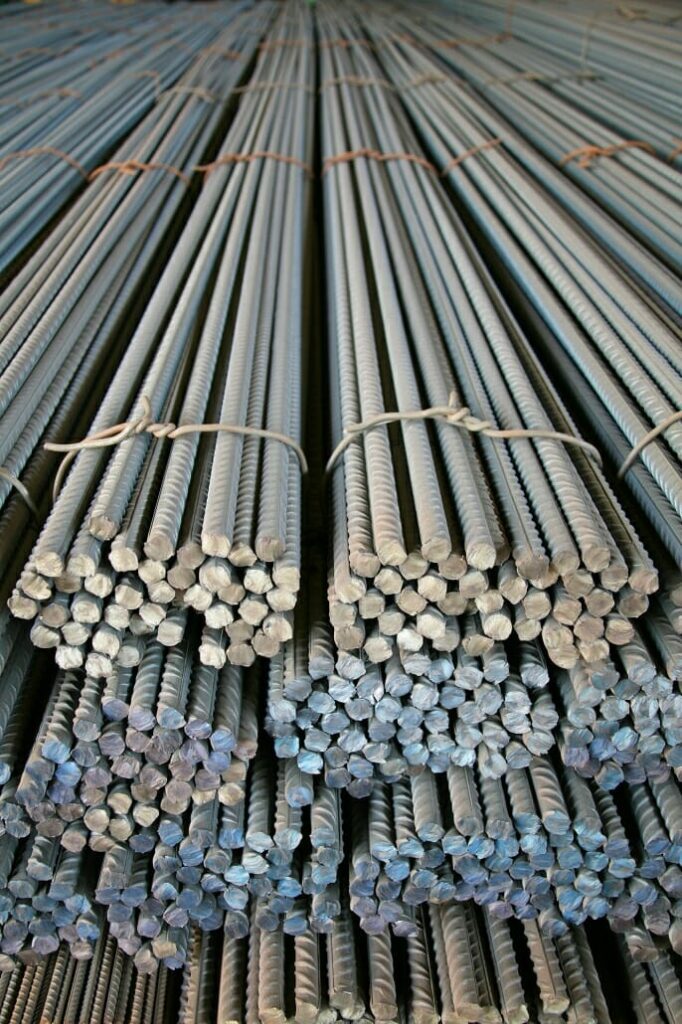 Selecting the right straight steel wire is crucial for various applications in metalworking, construction, and manufacturing. Understanding the details of straight steel wire ensures you choose the best product for your specific needs. This guide explores the basics of straight cut wire, key factors for selection, common applications, quality indicators, sourcing tips, and mistakes to avoid.
Selecting the right straight steel wire is crucial for various applications in metalworking, construction, and manufacturing. Understanding the details of straight steel wire ensures you choose the best product for your specific needs. This guide explores the basics of straight cut wire, key factors for selection, common applications, quality indicators, sourcing tips, and mistakes to avoid.
On This Page
Understanding the Basics of Straight Steel Wire
What Is Straight Steel Wire?
Straight steel wire is a wire made from steel, typically produced in a straightened form. It comes in various diameters and strengths, making it suitable for many applications. You’ll find it used in construction, manufacturing, and artistic projects due to its strength and flexibility.
Common Uses in Metalworking
In metalworking, straight steel wire serves many functions:
- Reinforcement: Provides strength in concrete structures.
- Fabrication: Essential for making various metal components.
- Fastening: Used to produce fasteners like screws and nails.
Stainless steel straight wire is especially valued for its corrosion resistance, making it ideal for applications exposed to moisture or chemicals.
Expert Insight: According to John Smith, a metalworking specialist, “Using the right type of steel wire in construction not only strengthens the structure but can also save costs in the long run.”
Key Factors to Consider When Choosing Straight Steel Wire
Diameter
The diameter of the wire directly affects its strength and flexibility.
- Thicker Wire: Offers more strength and load capacity, ideal for heavy-duty applications.
- Thinner Wire: Easier to manipulate and bend, suitable for lighter tasks.
Tensile Strength
Tensile strength refers to the maximum pulling stress a material can withstand before failure. Understanding it is crucial for applications with significant loads.
- High Tensile Strength Wire: Used in construction or industrial applications.
- Standard Tensile Strength Wire: Good for general purposes.
Material Grade
The material grade of straight steel wire is another vital factor. Different grades offer varying strength, durability, and resistance to environmental factors. Consider the following:
- Stainless Steel: Highly resistant to rust and corrosion, suitable for wet environments.
- Carbon Steel: More affordable but may need coatings for corrosion resistance.
Types of Straight Steel Wire: A Comparative Overview
| Type of Wire | Characteristics | Best Uses |
| Standard Steel Wire | Commonly used, balanced cost and performance | General applications |
| Stainless Steel Straight Wire | Corrosion-resistant, ideal for moist areas | Marine and food processing applications |
| Galvanized Wire | Coated with zinc for corrosion protection | Outdoor applications |
| Specialty Wire | Designed for specific tasks, high elasticity | Specialized tasks like springs |
| Application Area | Specific Uses | Benefits |
| Construction Industry | Reinforcing bars (rebar), wire mesh | Increases structural integrity and stability |
| Manufacturing Sector | Production of fasteners, frameworks | Essential for creating reliable machinery components |
| Arts and Crafts | Sculptures, jewelry, decorative items | Offers flexibility and strength for intricate designs |
| Automotive Industry | Wiring harnesses, structural components | Provides durability and resistance to vibrations |
| Electrical Applications | Grounding wires, connectors | Ensures safety and conductivity |
Applications of Straight Steel Wire in Metalworking Projects
Construction Industry
In construction, straight steel wire reinforces concrete structures, commonly used in:
- Reinforcing Bars (Rebar): Strengthens concrete.
- Wire Mesh: Provides additional stability.
Case Study: A recent project in downtown Chicago utilized stainless steel straight wire for rebar, ensuring durability against the city’s harsh weather conditions.
Manufacturing Sector
The manufacturing sector uses straight steel wire in producing various components, including:
- Fasteners: Screws, bolts, and nuts.
- Frameworks: In machinery and equipment assembly.
Arts and Crafts
Artists and craftsmen use straight steel wire to create sculptures, jewelry, and other decorative items. Its strength and flexibility allow for intricate designs and durable constructions.
User Testimonial: “Using straight cut wire for my sculpture project was a game changer. It allowed me to achieve the delicate designs I envisioned,” says Maria Lopez, a local artist.
How to Assess Quality in Straight Steel Wire Products
Quality Indicators
When assessing the quality of straight steel wire, look for:
- Surface Finish: A smooth finish indicates higher quality and reduces the risk of defects.
- Consistency: Uniform diameter and strength ensure reliable performance.
Certifications and Standards
Seek certifications like ISO 9001 or ASTM standards, which show that manufacturers follow strict quality control measures. These certifications provide peace of mind when selecting wire for critical applications.
Testing Methods
Some manufacturers perform tests, including tensile and corrosion resistance tests, to ensure their products meet industry standards. Always ask about these testing methods when sourcing your wire.
Sourcing Your Straight Steel Wire: Where to Buy from Trusted Suppliers
Online Suppliers
Many online platforms offer a wide range of straight steel wire products. When buying online, consider suppliers that provide:
- Detailed Product Descriptions: Know the specifications before purchasing.
- Customer Reviews: Feedback from previous buyers helps gauge quality.
Local Distributors
Local suppliers can provide immediate availability and personal service. When choosing a local distributor, look for:
- Reputation: Research their standing in the industry.
- Product Range: Ensure they carry the specific wire type you need.
Wholesale Options
If you need large quantities of wire for industrial applications, consider wholesale suppliers for competitive pricing and bulk purchase options.
Common Mistakes to Avoid When Selecting Straight Steel Wire
| Mistake | Consequence |
| Overlooking Specifications | Leads to poor performance in applications |
| Ignoring Environmental Factors | Causes premature failure due to rust or degradation |
| Choosing Based on Price Alone | May result in subpar quality |
| Neglecting Supplier Reputation | Risks purchasing low-quality products |

